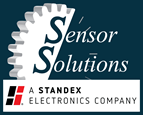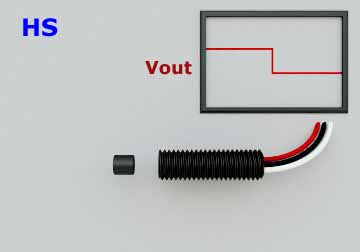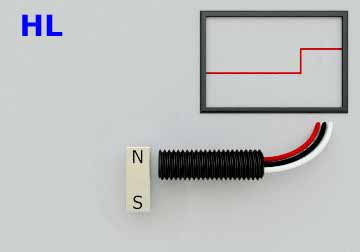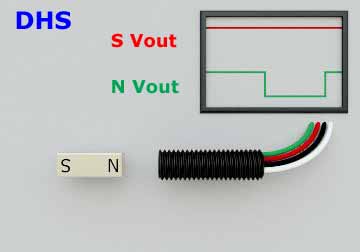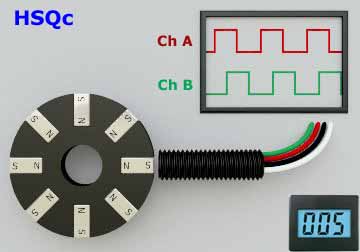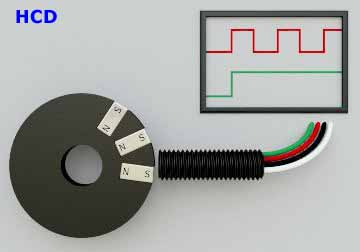Sensor Solutions catalog includes more than 1,000 unique sensors that provide one or more digital outputs that turn on when detecting the presence of a magnetic field. Choose from the options below to select the specific type of Hall Switch or Magnetorestive Switch required for your application.
There were no results for "".
If you are searching for a part number from a sensor engraving, you may be including a date code, gear pitch, or programming code.
Try searching again without any characters after an "_" or a blank space on the markings.
You may also find the product or information you need on one of the below pages:
For immediate assistance, please call us at: 970-879-9900.
Hall Effect and MagnetoResistive Switches
Single Channel Digital Switching Sensors
What are Single Channel Digital Switching Sensors?
The following sensor types provide a single digital switching output that turns on or off dependent on the presence of a magnetic field.
- Hall Effect Switches and Magnetoresistive sensors provide a digital switching output (or relay output) that activates when a large enough magnetic field is present and deactivates when the magnetic field falls below the sensitivity of the sensor. Standard Hall Switches Detect the South Pole field, but options for North Pole detection are available as well as either-pole switches that are not polarity sensitive.
- Hall Effect Latches provide a digital switching output that activates when a large enough South Pole Magnetic field is present. Unlike a Hall Switch, however, the output remains on until a North Pole field of the same size is detected. These latching sensors can create a 50% duty cycle for speed measurement when detecting alternating North and South Poles or for turning the output on/off over a specific range of movement by positioning North and South Pole magnets.
Two Channel Digital Switching Sensors
- Dual Output Hall Effect Switches provide a South Pole Hall Switch and a North Pole Hall Switch in a single package. These sensors can be paired with multiple magnets on a rotating target with one output measuring speed from magnets with one pole facing out. Then a single magnet of the opposite pole can confirm a specific location in the rotation or indicate a once per rotation count.
- Quadrature Magnet Sensors provide two out of phase digital pulsing outputs. When a magnet passes the sensor face in one direction Channel A will switch on before Channel B and when the magnet passes in the opposite direction Channel B will switch on before Channel A. When connected to a tachometer these sensors can be used to monitor speed and direction. When wired to a counter they can provide a scaled up/down count based on the direction of rotation.
- Speed and Direction Magnet Sensors output a digital pulse on Channel A and a high/low direction output on Channel B. When paired with a tachometer or controller these sensors can monitor the speed and direction of movement, or display a directional count.
- Speed Switch Sensors provide a digital pulsing speed output and a high/low or open/close speed switch output that turns on/off or opens/closes a relay dependent on the frequency at which magnets are passing the sensor.
Speed Switch Sensors for Magnets
When detecting an over-speed, under-speed, or zero-speed condition is required in an application any of our Hall Effect Switches can be connected to a precision-programmed Speed Switch Meter. For a lower-cost solution, Magnetic Speed Switch Sensors provide 1 digital pulsing speed output and a second output (relay or transistor available) that switches at a specified frequency.
Magnets for use with Hall Effect Switches
What are Hall Effect Switches?
The maximum gap at which a Hall Effect sensor is able to detect a magnet is dependent on the characteristics of the sensor and the magnet. High-sensitivity Hall Switches require a smaller Gauss field to trigger and the size, shape, material, and grade of the magnet will determine the size of the magnetic field at a specific gap. For pairing sensors and magnets, this Application Note charts magnetic field strengths against the switch points of our magnetic sensors.
A large variety of target magnet options are available in our Accessory Catalog. We offer raw magnets with the South Pole Marked as well as magnets built into threaded bolts for mounting in threaded holes and magnets mounted into clamping shaft collars for easy installation on smooth shafts.
For more information on our packaged hall effect magnetic switches or digital & analog detection sensors, contact us or check out our Application Notes.
